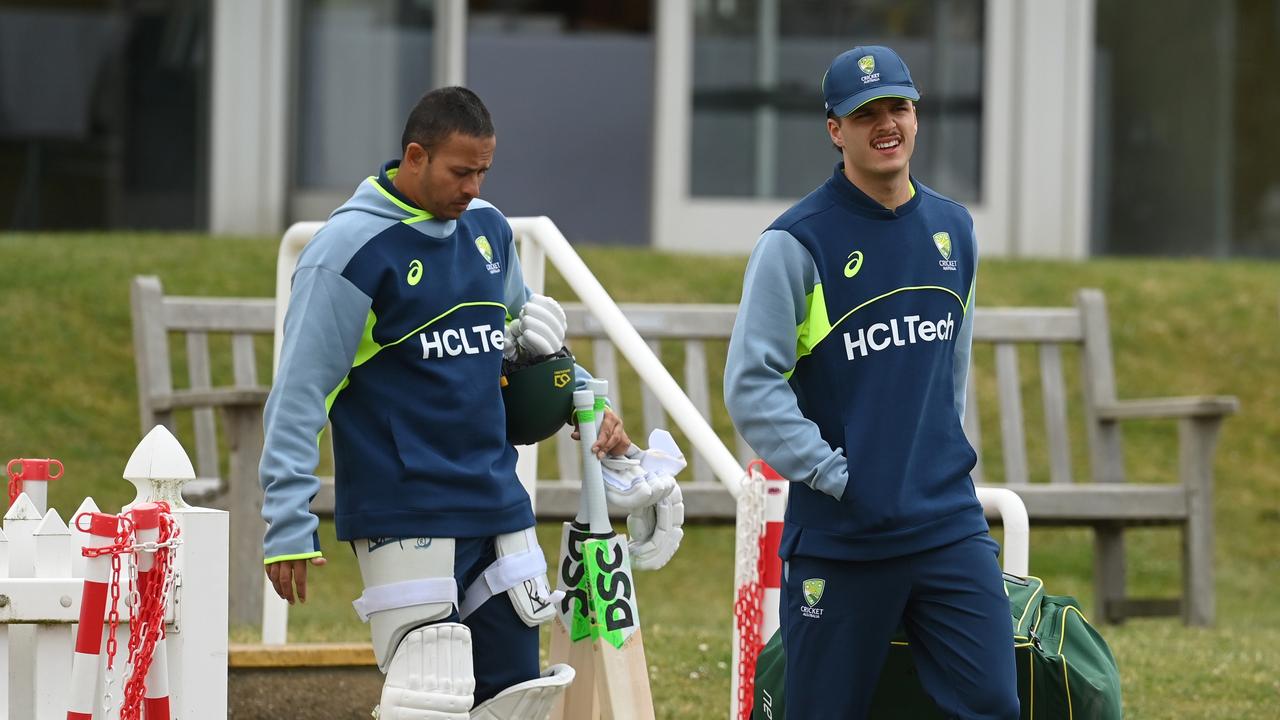Neat Labuschagne knock highlights Australia’s batting issues
Australia’s batting is a whack-a-mole at the moment. Just as one issue is being bumped on the head, another shoots up from beneath the surface.
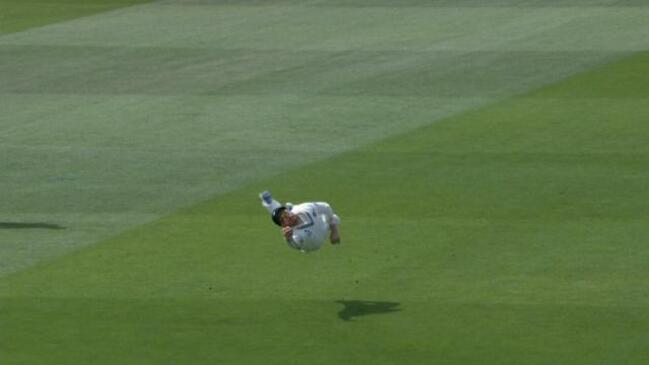
Cricket
Don't miss out on the headlines from Cricket. Followed categories will be added to My News.
Australia’s batting is a whack-a-mole at the moment.
Just as one issue is being bumped on the head, another shoots up from beneath the surface.
First, to the good news.
Marnus Labuschagne is back, vindicating the joint assertion of Pat Cummins and Andrew McDonald that the Queenslander’s form was not a major concern and certainty that he was never in any selection peril.
It took a one-handed diving screamer at gully from Glenn Phillips to remove Labuschagne just before lunch on Saturday.
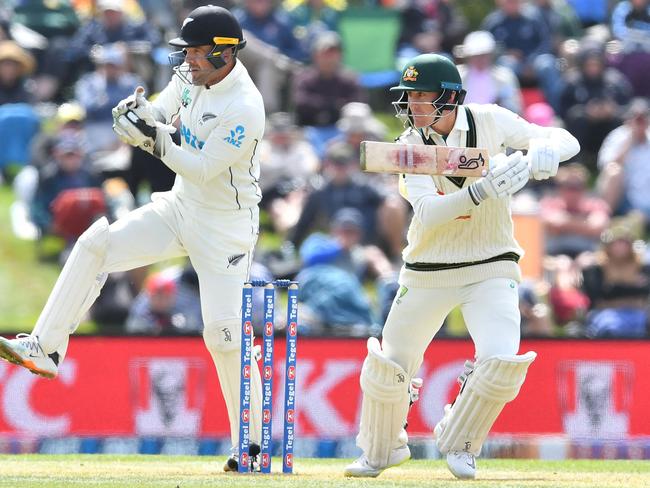
It was the type of chance that never would have been snaffled when luck was consistently going Labuschagne’s way during the early part of his Test career.
The difference to recent months though is that by the time of Phillips’ leap, Labuschagne had already made 90, the standout innings of another low-scoring Test, just as most of Australia’s matches seem to be these days.
It was a terrific innings from Labuschagne, without a hint of streakiness.
At times over the last nine months it had looked like he was so befuddled by his string of nicks, a chain set in motion by Stuart Broad at the start of the Ashes, that he had stopped looking to score available runs.
The most extreme example came in his two-hour innings of nine at The Oval.
There was no sense of that inertia during his dig in Wellington.
Labuschagne’s innings came from 147 balls, at a sharper rate than his important contributions in both the World Cup semi-final and final.
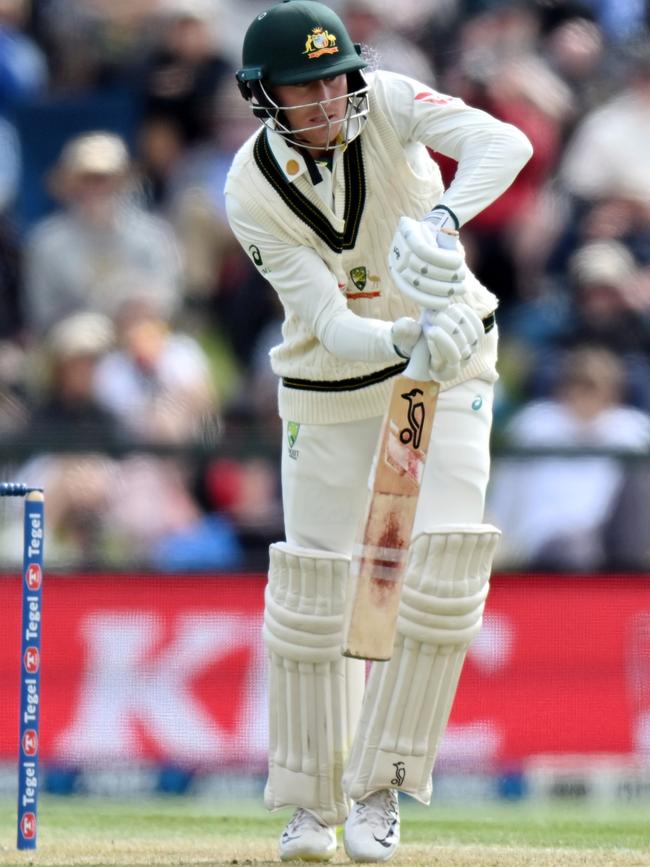

That he batted so far out of his crease to be warned by umpire Marais Erasmus for encroaching into the restricted zone was emblematic of the changed approach.
The hunted was again the hunter.
As no fewer than seven of his teammates fell to the irrepressible Matt Henry, Labuschagne was unbowed.
And yet Australia was still unable to put the game beyond New Zealand’s reach.
Just as was the case with Mitch Marsh in Leeds, Travis Head in Adelaide, Steve Smith in Brisbane and Cameron Green in Wellington, Labuschagne had little help from the rest of the top six.
The only 50-partnership of the innings was that of Labuschagne and nightwatcher Nathan Lyon, who again capitalised on being dropped to make 20.
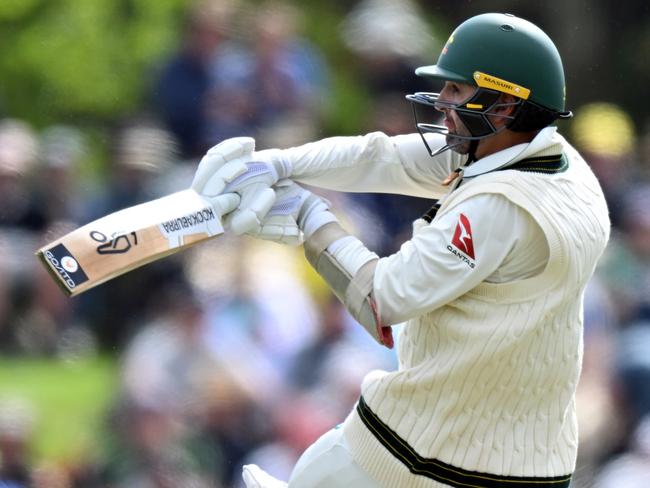
It’s been that sort of season, with batting clearly tough across the board.
To think that the summer started with Green out of the side and David Warner’s spot the most contentious.
They have the two best Test batting averages for Australia since the start of December.
No one has got going with any level of consistency.
After a golden run following his Test recall in which he made the most of lives at Headingley and the MCG, Marsh has 76 runs in six innings since the start of the West Indies Tests.

A defence that by his own admission has “more holes than Swiss cheese” was exposed by a full ball angling in from Henry.
Australia could probably swallow taking Marsh’s good with the bad at No. 6 if Head was more bankable one spot above.
But the South Australian’s first-innings ton in Adelaide remains his sole innings of 50 or more across all formats since his World Cup final epic.
Usman Khawaja has kept getting starts but isn’t going on with it and has entered full-blown stodgy mode.
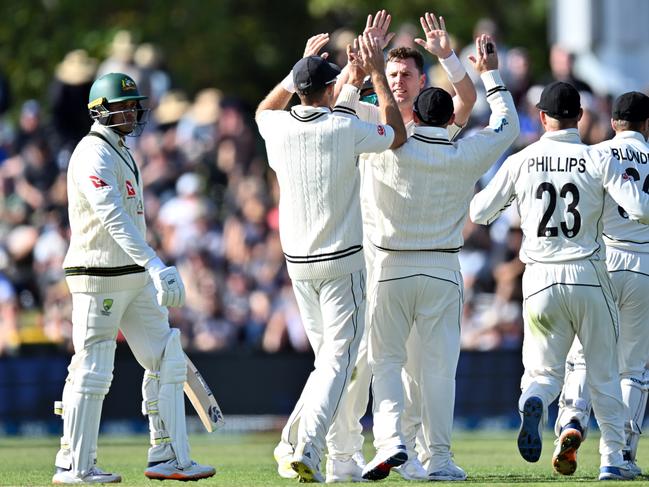
Smith’s Brisbane innings was outstanding but it remains the outlier since his shift up the order.
He continues to grapple with the location of his off-stump, an unthinkable proposition during his pomp.
And yet the man most vulnerable from a selection perspective remains Alex Carey.
The wicketkeeper was excellent behind the stumps on day one but his errant sweep off Phillips to depart for 14 sent his average tumbling further below 30 and made for a trilogy of self-inflicted wounds since arriving in NZ.
No guarantee to bat again in this match, he faces a torturous eight-month fight to stave off Josh Inglis for the gloves come the start of the India series in late November.
Carey’s drop of Tom Latham late on day two was a rare blot for his glovework.
Australia used to win Tests because of the reliability of its top seven batters. Now it is doing so in spite of it.
More Coverage
Originally published as Neat Labuschagne knock highlights Australia’s batting issues





